“This is a land yacht you can enjoy” opines the seller of this 1975 Oldsmobile Toronado. It’s a beast alright and while a progeny of its 1966 origin, it’s pretty well removed from that landmark car at the same time. Listed as a 46K mile example, I’d put this big front-wheel driver in a survivor category – it has a lot of eye-ball appeal, that’s for sure. Located in Largo, Florida, this Toronado is available, here on eBay for a BIN price of $9,799 and there is a make-an-offer option too. Thanks to Larry D for this tip!
The initial 1966 Toronado was a real jaw-dropper. Designed by GM designer David North, with oversight by legendary GM VP of Design, Bill Mitchell, it was unlike any production car the General had conjured. There were visual similarities to the ’66 Buick Riviera but the big news at Olds was the Toronado’s front-wheel-drive architecture – one that was sturdy enough to handle the power of a 385 HP V8 engine. The styling was light and breezy but pointed with sharp creases at the same time. It also embodied the long hood/short deck arrangement that became very popular in the 60s. Enticing it was as first-year sales amounted to about 44K units.
Move to the Second-Gen Toronado (1971-1978) and the concept stays the same but the big hardtop grew bigger with an added 16.5 inches in length (3″ in the wheelbase) but surprisingly, only gained about 300 pounds. But that light and breezy part of the original styling got dulled into more of a bloato presence. It was still undeniably an Oldsmobile Toronado but as B.B. King once wailed, the thrill was gone. So were the sales with only 23K making the closing sales argument. The seller advises, “This Toronado is finished in an interesting color combo. White exterior with white leather, featuring red interior accents“. Interesting? I guess, but it was a pretty common combination on these, Eldorados, and even Continental Marks. Anyway, this Toronado presents perfectly as nothing looks out of place. Be it the finish, the chrome accouterments, the stainless trim, or that white landau top, it’s hard to find fault.
But I can find fault under the hood because there is no included image of the 210 net HP, 455 CI V8 engine. The seller claims, “runs and drives” which isn’t exactly a ringing endorsement. It is further stated that “an inspection was just completed in preparation for sale” but that says little about this car’s overall mechanical condition. The drivetrain, of course, is a Turbo-Hydramatic 425 three-speed automatic transaxle – a sort of backward Turbo 400 transmission combined with a differential.
The interior, with the exception of the driver’s side armrest, looks untouched and unused. GM loved red interiors but in this case, it’s a combo of red highlights (carpet and dash) with cloud-white leather upholstery, door panels, and a headliner. The environment has held up well without any yellowing or cracking. Mention is made of the “Complimentary Tape Cartridge” – it’s actually an eight-track tape player. The instrument panel is well laid out and is hardly minimal in nature but the switch gear, panel trim, and gauges, which are all clear, show as mediocre in quality – I would expect better on this car. Starting in ’75, besides catalytic converters, GM installed mileage minder gauges in some of their cars which indicated to the driver when the car was realizing optimal fuel mileage. It’s really a vacuum gauge (heavy foot – red and bad/light foot – green and good) and until I spied the one in this Olds I had forgotten about that feature.
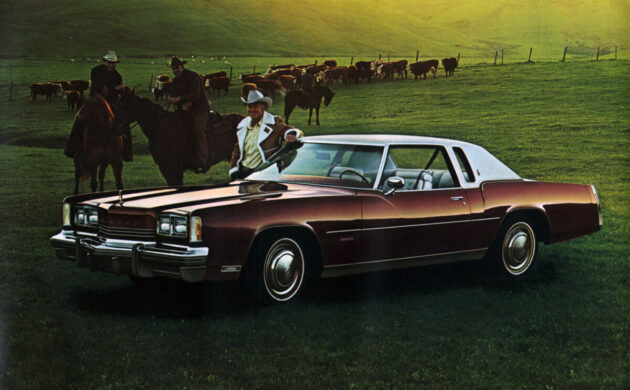
What was the target market for such an automobile? I seriously doubt as Oldsmobile thought, that it was the Marlboro Man – I can’t imagine riding the range in one of these. No, it was a personal luxury coupe designed for the individual who had done well for themselves and liked a little exclusivity and privacy. These were individuals who weren’t particularly put out by the ’73-’74 oil embargo’s resulting price increase of the repeated fill-ups necessary to feed the big 7.4 liter V8. Once again, we find another big domestic V8-powered, two-door hardtop, the likes of which we won’t see again. So, if that’s your thing, here you go, you’d be hard-pressed to improve on this ’75 Toronado, wouldn’t you agree?
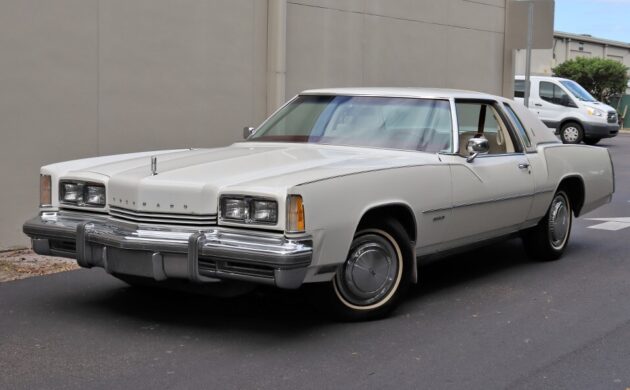
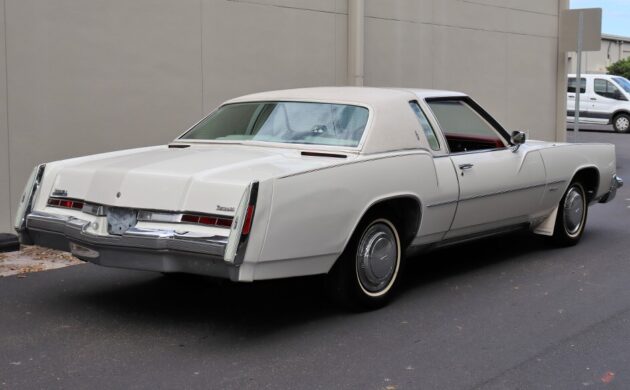
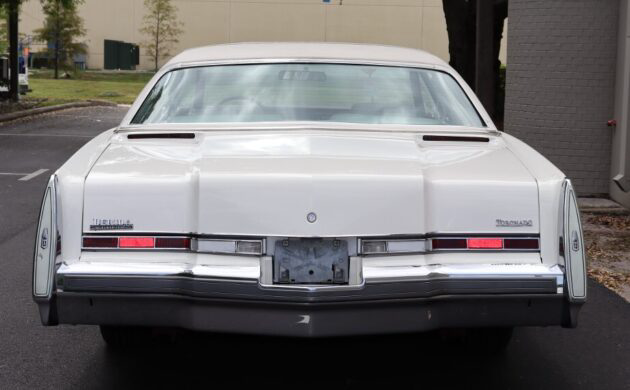
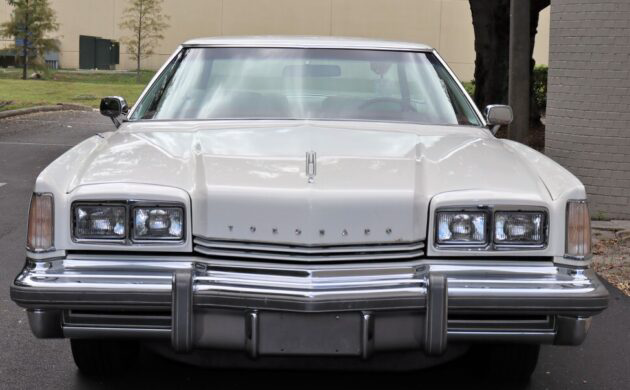



This is a really nice-looking car for the price.
With this size, only two doors, and this color combination it is wonderful.
It has personality.
This appears to be a great example of a car I’ve never really cared for. The design of the 2nd generation Toronado originated with a rejected proposal for the 1967 Eldorado. Cadillac was wise to reject it, in my view.
Those are the whitest white seats of all time
The last of the Boattail Baroque era at GM. The ’71s were the best – Riviera, GP, Toronado, Wayne Cady’s Eldorado… stunning cars all. Before the massive bumpers and plastickyness those bumpers necessitated. These Mitchell Era cars had massive style. Glamour. Presence. Not like today’s vehicular blobs and Tonka trucks. Somebody’s gonna get a great deal on a rare classic piece of appreciating classic Americana. Prices on underappreciated 1970s American cars are undergoing a correction and will rise in the coming years as younger folks raised in a literal automotive styling vacuum without all the preconceived notions who hunger for something exuberant embrace them.
Beautiful. Comfortable and not $900 a month car payment for a stupid SUV that comes with plenty of modern problems, like cheap plastic headlamps that bake in the sun and cost $1,000 each to replace, after some detailer has ruined them with these so called repair kits that strip off the useless protective coating. So if gas is $4? After paying less than 10 large for this, you will have gas money.
I believe I am a previous owner of this particular Toro. Contact me and I can give some particulars.